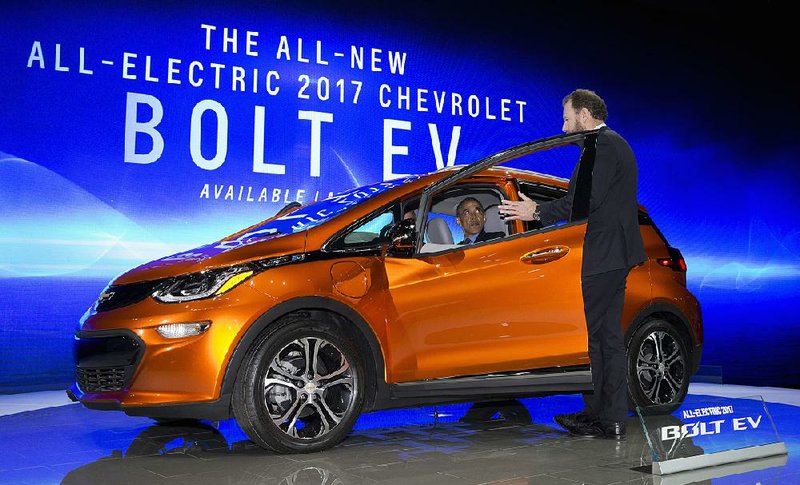DETROIT -- President Barack Obama on Wednesday highlighted the auto industry's remarkable turnaround by touring upcoming models at the North American International Auto Show and reminding the public that his administration helped rescue the industry when most Americans opposed further financial assistance for Chrysler and General Motors.
After arriving in Detroit, Obama had lunch at a brewery with Mayor Mike Duggan, a GM employee and others, then stopped at watchmaker Shinola before heading to the show. He toured exhibits by Chrysler and GM and looked over a minivan and electric vehicle before veering off in the direction of a bright yellow 2017 Chevrolet Corvette.
"That one is juiced up a little more," he said.
The auto show is taking place as the industry enjoys record sales. Americans purchased nearly 17.5 million vehicles last year.
The U.S. treasury invested about $80 billion in the U.S. auto industry during the last recession. After counting loan repayments, dividends and stock sales, the federal government recovered $70.5 billion.
"Critics said it was a 'road to socialism' or a disaster waiting to happen," Obama said this month. "But I'd make that bet again any day of the week."
Obama can't take all of the credit for the government's help. President George W. Bush initiated the auto bailout with more than $17 billion in short-term loans. Under ordinary circumstances, Bush said he wouldn't have favored intervening to prevent automakers from going out of business, but in the midst of a financial crisis and recession, allowing the industry to collapse would send the country into a deeper and longer recession.
The Obama administration also provided additional capital to help Chrysler and G.M. continue operating as they restructured operations before and during a Chapter 11 bankruptcy proceeding. The companies shuttered plants, laid off workers and cut ties with thousands of dealerships.
Most Americans opposed providing a second round of government aid. A Gallup poll from February 2009 showed that about 58 percent opposed giving aid to automakers in danger of going bankrupt. Only about 41 percent supported the aid.
Even three years later as Americans looked back, a slight majority said they disapproved of the bailout, with Republicans opposing it by a 3-to-1 margin, Gallup said.
Of the 20 or so models unveiled at the auto show last week, four were large, luxury sedans -- a class of vehicles whose U.S. sales dropped 15 percent in 2015. Also prominent at the show are premium sports cars, a segment that saw almost one-third of its buyers disappear last year.
The growth in the auto industry of late hasn't come from low-slung, pricey machines, but rather from pickups, entry-level sporty cars such as the Ford Mustang, and SUVs of all shapes and sizes.
Planners took the easy route in designing cars when sales recovered after the recent recession, overhauling the vehicles that would sell the fastest.
Lincoln greenlighted a midsize crossover, the MKC, which parked squarely in the hottest segment of the business. Hyundai made over its Sonata sedan, its second-best seller. Acura designed an all-new sedan for first-time luxury buyers, the TLX.
Information for this article was contributed by Kevin Freking of The Associated Press and Kyle Stock of Bloomberg News.
Business on 01/21/2016
